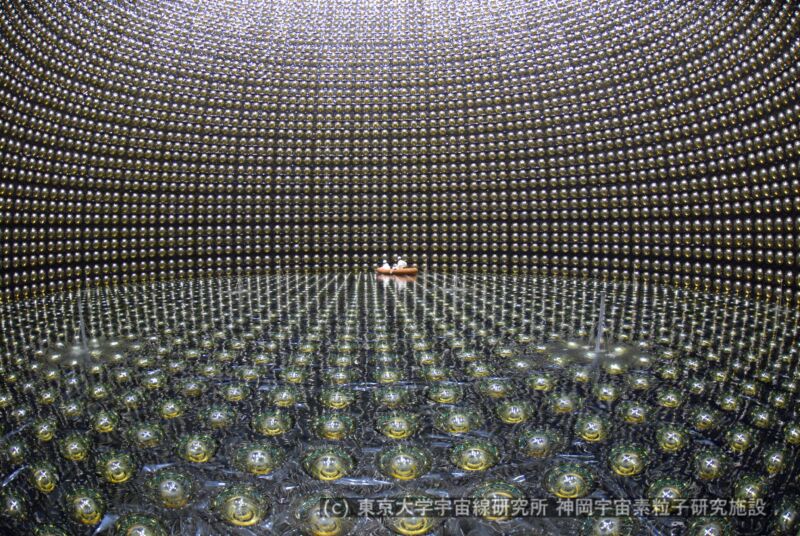Neutrinos may help us understand how matter prevailed over antimatter

Enlarge / The Super Kamiokonde neutrino detector as it was being filled with water. (credit: Super Kamiokande)
Everything we can see in the Universe is made of matter, and we wouldn't exist without it. For physicists, this is actually a problem. From the perspective of the physics that describes the behavior of particles, matter and antimatter are equivalent. As far as the Standard Model of particles is concerned, there's no reason we shouldn't see equal amounts of matter and antimatter-or, more correctly, just the photons left behind after they meet and annihilate each other.
For there to be the sort of difference between the two that makes our Universe possible, something has to break the apparent symmetry between them (technically termed charge-conjugation and parity-reversal symmetry, or simply CP symmetry). And we have identified some cases of CP symmetry violations; they're just too small to account for all the matter in the Universe.
Now, nearly a decade of data from the world's leading neutrino observatory has found an indication that these particles display hints of a CP symmetry violation that's potentially much larger. While the data doesn't reach the level where physicists are willing to call it a discovery, it definitely warrants follow-ups as additional detectors come online.
Read 16 remaining paragraphs | Comments